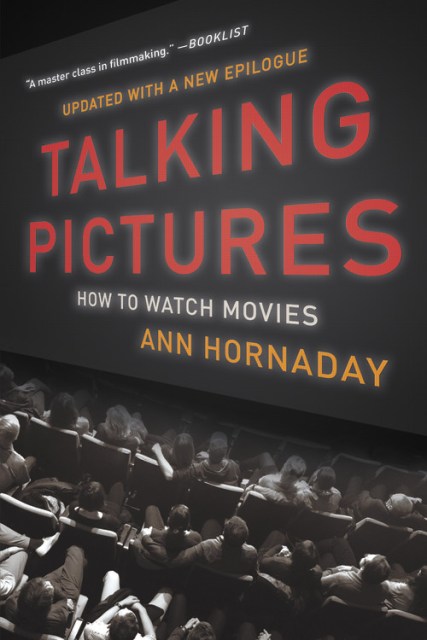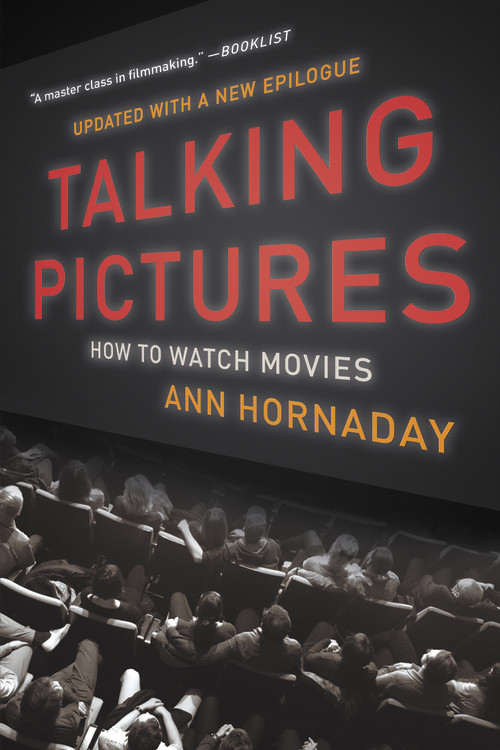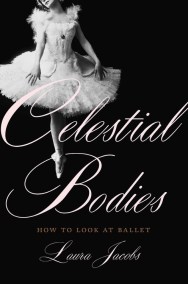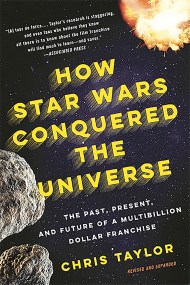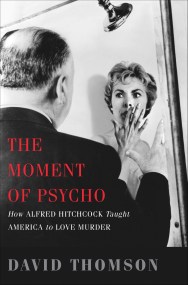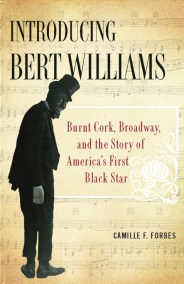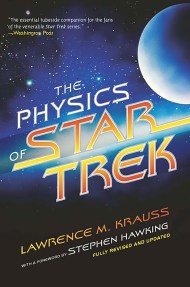Promotion
Use code BEST25 for 25% off storewide. Make sure to order by 11:59am, 12/12 for holiday delivery!
By clicking “Accept,” you agree to the use of cookies and similar technologies on your device as set forth in our Cookie Policy and our Privacy Policy. Please note that certain cookies are essential for this website to function properly and do not require user consent to be deployed.
Talking Pictures
How to Watch Movies
Contributors
By Ann Hornaday
Formats and Prices
- On Sale
- Nov 6, 2018
- Page Count
- 320 pages
- Publisher
- Basic Books
- ISBN-13
- 9781541672970
Price
$17.99Price
$22.99 CADFormat
Format:
- Trade Paperback $17.99 $22.99 CAD
- ebook $11.99 $15.99 CAD
This item is a preorder. Your payment method will be charged immediately, and the product is expected to ship on or around November 6, 2018. This date is subject to change due to shipping delays beyond our control.
Buy from Other Retailers:
Whether we are trying to impress a date after an art house film screening or discussing Oscar nominations among friends, we all need ways to look at and talk about movies. But with so much variety between an Alfred Hitchcock thriller and a Nora Ephron romantic comedy, how can everyday viewers determine what makes a good movie?
In Talking Pictures, veteran film critic Ann Hornaday walks us through the production of a typical movie — from script and casting to final sound edit — and explains how to evaluate each piece of the process. How do we know if a film has been well-written, above and beyond snappy dialogue? What constitutes a great screen performance? What goes into praiseworthy cinematography, editing, and sound design? And what does a director really do? In a new epilogue, Hornaday addresses important questions of representation in film and the industry and how this can, and should, effect a movie-watching experience. Full of engaging anecdotes and interviews with actors and filmmakers, Talking Pictures will help us see movies in a whole new light-not just as fans, but as film critics in our own right.
Genre:
-
"Hornaday, a movie critic for The Washington Post and a Pulitzer Prize finalist, offers a primer on everything about filmmaking, from casting to sound edits to production design. Along the way, she includes tidbits from her interviews with actors and directors, helpful questions to keep in mind when watching films and recommended viewing lists. The resulting book is a sensible, middle-of-the-road guide for amateurs and movie buffs alike."New York Times Book Review
-
"[An] illuminating new book for anyone who wants more from the movies than popcorn and thrills."Washington Post
-
"Hornaday has written a highly readable treatise on the sinew and bones of filmmaking.... If you really are serious about the films you take time and money to see, Talking Pictures will make your celluloid education an ongoing pleasure."Providence Journal
-
"[Hornaday] offers her insights, opinions and finely tuned observations on actors and acting, camera work, editing, sound and music, and the other elements of film--and how they can all combine to truly make a movie good, bad or just so-so."Parade
-
New York Times Book Review
"Ann Hornaday provides a pleasantly calm, eminently sensible, down-the-middle primer for the movie lover--amateur, professional or Twitter centric orator--who would like to acquire and sharpen basic viewing skills." -
"For people who go to the movies and (even better) like talking about them afterward, Talking Pictures is a must-have. For those of us who study and write about the movies, it's a reminder of why we bother."Popmatters
-
"Talking Pictures is like enrolling in a master class on the art of cinematic parsing--and is a lot cheaper than signing up for a college course. It is also more fun since Hornaday wisely employs quotes and anecdotes from a wide range of major talents both in front of and behind the camera, many taken from interviews she has done over the years."Buffalo News
-
"A master class in filmmaking and a celebration of why we love movies."Booklist
-
"Ann Hornaday knows movies, but more importantly, she knows how to write about movies for a diverse readership. This book is an extension of that essential talent, a clear-eyed assessment of what makes this art form so engaging and how to ask hard questions of it. Anyone remotely intrigued by the filmmaking process will learn something new about it--I know I did--and come away with a fresh toolkit for debating movies old and new. Hornaday's book is a quintessential reminder that movies are a major art form, and it's a must-read for anyone who feels the same way."Eric Kohn, chief critic, Indiewire
-
"In this essential book Ann Hornaday explores the unique alchemy of filmmaking through its various disciplines, and manages to explain the unexplainable. With clarity and compassion she demystifies the brilliance of Groundhog Day, breaks down how the editor on a film is the audience's chief surrogate, and ultimately puts her finger on what we crave every time the lights go down in a movie theater: 'the singular joy that comes from authentic human connection.' This book is a true gift to all filmmakers and film lovers."Albert Berger, Academy Award-nominated producer of Nebraska, Cold Mountain, and Little Miss Sunshine, among others
Newsletter Signup
By clicking ‘Sign Up,’ I acknowledge that I have read and agree to Hachette Book Group’s Privacy Policy and Terms of Use
